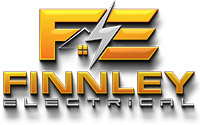Yes, Australia’s electrical safety codes mandate the inclusion of an electrical disconnect switch for most 240-Volt appliances including exhaust fans. Devices that are visible and within 15 meters of the breaker box are the sole exceptions to this rule. All appliances located in different rooms or outside need a nearby disconnect switch. This precautionary measure ensures the safety of electrical providers who may need to service these appliances. The wiring of the disconnect switch forms an essential part of the circuit breaker cable, facilitating the power supply to the devices.
The installation of bathroom exhaust fans in Australia must adhere to the Australian/New Zealand Wiring Rules AS/NZS 3000:2018, as well as AS 1668.2-2012, which covers the use of ventilation and air conditioning in buildings, specifically regarding mechanical ventilation for acceptable indoor air quality.
Within the United States, Section 422.20 of the 2017 National Electrical Code (NEC) stipulates a simultaneous disconnect mechanism for each appliance from all ungrounded conductors, following Part III of Article 422. The types of acceptable disconnecting means differ based on the appliance, ranging from a unit switch with a clearly marked “off” position to a horsepower-rated snap switch, or even the branch circuit breaker.
Section 422.31 offers disconnection guidelines for three specific types of permanently connected appliances:
- Appliances rated at or below 300 volt-amperes (VA) or 1/8 horsepower (HP).
- Appliances rated above 300 volt-amperes.
- Motor-operated appliances rated above 1/8 horsepower.
Only regulations 1 and 3 pertain to motors, as Section 422.31(B) does not reference horsepower, indicating its inapplicability to motor-free appliances.
The disconnecting requirements for permanently connected appliances rated at 300 VA or less or 1/8 HP or less have been a topic of widespread confusion. While the 2014 NEC® allowed the branch-circuit overcurrent device to serve as the disconnecting means, it remained silent on its location.
The 2017 NEC®, however, offers a more unambiguous guideline. It states, “The branch-circuit overcurrent device shall be permitted to serve as the disconnecting means where the switch or circuit breaker is within sight from the appliance or is lockable in accordance with 110.25”. “Within sight from the appliance” refers not only to the visibility of the appliance while using the switch but also to the visibility and accessibility of the switch for the electrician during service, within a range of 50 feet.
This revised guideline aligns with requirements in 422.31(B) for permanently connected non-motor appliances rated above 300 VA, such as an electric water heater. Without a disconnecting means within sight, the circuit breaker must be equipped with a lock.
The NEC mandates that every piece of countertop 12 inches or wider must feature an outlet above it, with an additional outlet every four feet. The ICC A117.1 supplements these requirements by necessitating a clear floor space of 30 inches by 48 inches in front of the counter to ensure individuals using wheelchairs can reach the outlets.
Location of Disconnect switches
When it comes to the location of the disconnect, section 430.107, titled ‘Readily Accessible’, stipulates that ‘at least one of the disconnecting means shall be readily accessible’.
A NEMA-3R weatherproof rated disconnect switch, in this context, can provide effective electrical shutdown and enhanced safety, forming a crucial part of the entire setup.
Why Disconnects Are Needed
Disconnects play a crucial role in ensuring electrical safety in both residential and commercial environments.
Their primary function is to swiftly disconnect power to an electrical circuit, providing an immediate halt to the flow of electricity in the event of an emergency or for maintenance purposes.
By creating a clear break in the circuit, disconnects not only help prevent electrical shocks and potential fires but also facilitate safe and efficient servicing or repair of electrical appliances. For instance, if an exhaust fan malfunctions or needs to be replaced, a nearby disconnect allows a technician to cut off power to the unit, thereby reducing the risk of electrical injury during the procedure.
The inclusion of disconnects is not only recommended but is often a mandatory requirement in electrical codes worldwide, illustrating their vital importance in electrical safety.


